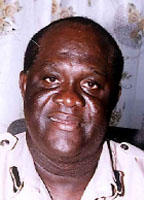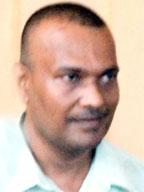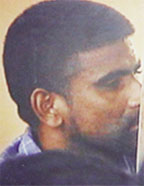The ‘Leonora Incident,’ in which a boy was tortured by the police last October, was the worst crime of the year. The so-called ‘report’ handed to the public was the worst sham.
It would be a gross exaggeration to describe the thin ‘document’ presented to the public by the Minister of Home Affairs as a ‘Report’ on the torture of a boy by members of the Guyana Police Force. It was, at best, a fragment of what should have been a serious and substantial investigation into the ‘crime of the year’ – the most unimaginably egregious violation of the human rights of a member of one of the most vulnerable sections of society – the poor and the young.
At worst, the ‘document’ was an attempt to create the impression that the authorities seriously intended to discover how such a crime came to be committed and to determine what systemic or structural changes had to be made to prevent a recurrence. The ‘document’ that was released, however, was definitely deficient in the most important ingredients that an incisive investigation should evince and in recommending measures to prevent a recurrence.

President Bharrat Jagdeo, at the start of the scandal over the ‘Leonora Incident,’ had ordered the investigation and had given public assurances that findings would be made available for members of the public to judge for themselves. In response to a question posed by this newspaper on 13th November, the President emphasized that the media and public would be able to examine the findings and exercise their judgment. He said, “I didn’t say I will get the report and I will keep it in my pocket and be the sole judge. The report would be public and I will determine if it requires further investigation in my judgment…”
He added that if he considered the investigation to be inadequate he may decide that there would be need for a commission of inquiry. That moment has arrived.
Crime of the year
The sequence of the events surrounding the ‘Leonora Incident’ began to unfold on 26th October with the murder of People’s Progressive Party stalwart and former Vice-Chairman of the Essequibo Islands-West Demerara Region Ramenauth Bisram. The discovery of Bisram’s body with multiple stab wounds at his home in the Canal No 2 Polder on the West Bank Demerara led to the arrest of several persons including Twyon Thomas, called ‘Buck Boy;’ Deonarine Rafick, called ‘Mitchum;’ Kishore Deonarine, called ‘Pulla Boy’ and Nouravi Wilfred, all on suspicion of murder.
Twyon Thomas was taken to the La Grange Police station on the West Bank on 28th October and thence to the Leonora Police Station on the West Coast in good health. At Leonora, he was taken into the office of the Criminal Investigation Depart-ment where he was ‘interviewed’ by four members of the Force.

Thomas’s head was covered with a hood, probably to prevent him from recognising and identifying his tormentors. He was beaten and burnt then was told, under threat of being “further injured,” that he had to make a written statement in relation to Bisram’s murder. Thus intimidated, he then signed the statement that had been written for him. Following the ordeal, he was taken to the Vreed-en-Hoop police station on the West Bank on 29th October.
The ‘document’ suggests that although Thomas was in pain, was weeping and calling for his parents, no one sought to inquire how the injuries were sustained. The duty officer, however, did report the incident to the Divisional Commander Assistant Commissioner Paulette Morrison, informing her about the boy’s injuries. She instructed Superintendent Kissoon to have the boy receive medical attention. This was done at the Vreed-en-Hoop police station only under cover of darkness on the evening of 29th October, almost 24 hours after he had been beaten and burnt.
Bizarrely, the police surgeon, Dr Mahendra Karna Chand, claimed that the boy’s head was covered and he did not ascertain his identity nor did he question him about his injuries. Sergeant Singh, who was present at the examination, however, contradicted Chand’s statement, asserting instead that the boy’s head was not covered and the doctor did question him about his age, name, address and how he sustained his injuries.
During the night, an unidentified man took photographs of the injuries on the boy’s body and, on 31st October, three days after being burned, a full frontal nude photograph was published in the newspapers.
The boy was eventually removed to the West Demerara Regional Hospital only on 31st October and referred to the Burn Care Unit at the Public Hospital Georgetown.
That is how the story went.
Crime against humanity
It was out of these events which involved, or was witnessed by, several members of the Force, that the ‘document’ purporting to be a report on an investigation was drafted. Given the gravity of the allegations and the level of local and international interest that had already been aroused, it was expected that the investigation’s methodology would have been the best that the country could provide. Disappointingly, however, it was not.

The final ‘document’ consisted of two sections. The first section was made up of a covering letter from the Commissioner of Police Henry Greene, addressed to the President Bharrat Jagdeo (not the Minister of Home Affairs Clement Rohee) to which an attachment containing 34 paragraphs, also signed by the Commissioner, was appended. The second section comprised four brief appendices consisting of statements by Twyon Thomas, and Deonarine Rafick; an opinion by Shalimar Ali-Hack, Director of Public Prosecutions and an opinion by Cecil Kennard, Chairman of the Police Complaints Authority.
It contained no list of persons interviewed by the investigator, places – such as the crime scene – visited, or exhibits – such as objects used to inflict injuries, or photographs.
Although criminal prosecution and administrative action has been recommended against several members of the Force, there is no summary of evidence or any statements given by the culprits by which their actions could be judged. This is a particularly worrying aspect of the ‘document.’
The Director of Public Prosecutions Shalimar Ali-Hack recommended actions against the Divisional Commander and issued a ‘Letter of Discontinuance’ which effectively terminated criminal proceedings against the murder suspects. She ordered also that a charge of ‘Felonious wounding’ be brought against the policemen Narine Lall, Mohanram Dolai and Deryck Foo, to be disposed of summarily. Oddly, Mr Kennard’s opinion cited a long passage apparently written by Assistant Commissioner Makhanlall which is not attached to the ‘document.’
Chain of command
Torture is a very serious crime and the administration is playing with fire by handling the investigation in a deliberately deceptive manner. The United Nations Convention against Torture and Other Cruel, Inhuman or Degrading Treatment or Punishment defined torture as “any act by which severe pain or suffering, whether physical or mental, is intentionally inflicted on a person for such purposes as obtaining from him or a third person information or a confession, punishing him for an act he or a third person has committed or is suspected of having committed, or intimidating or coercing him or a third person, or for any reason based on discrimination of any kind, when such pain or suffering is inflicted by, or at the instigation of, or with the consent or acquiescence of a public official or other person acting in an official capacity.”
Further, “States are to ensure that all acts of torture are offenses under its criminal law, including complicity or participation in torture. International law places an obligation on states to prevent, investigate, prosecute and punish torture and other ill-treatment. The obligation to prosecute torture includes those who are complicit as well as to those who directly participate in torture, as well as those responsible in the “chain of command.”
It is clear, even from the very inadequate ‘document’ put before the Guyanese public, that the crime of torture – in accordance with this definition – has been committed. All police officers, starting with the Commissioner, should bear in mind that torture is a crime of a “universal jurisdiction.” Those who order, or carry out such acts, can be prosecuted anywhere in the world, irrespective of the nationality of the victim or perpetrator. No one can claim exemption from this because of his or her official capacity. There is no statute of limitations for such crimes under international law.
The police should bear in mind also that the Government of Guyana signed and ratified the Convention against Torture and Other Cruel, Inhuman or Degrading Treatment or Punishment over twenty years ago. As a signatory to the Convention, Guyana is obliged to “take effective legislative, administrative, judicial or other measures to prevent acts of torture in any territory under its jurisdiction.” No exceptional circumstances whatsoever, whether a state of war or a threat of war, internal political instability or any other public emergency, may be invoked as a justification of torture and “an order from a superior officer or a public authority may not be invoked as a justification of torture.”
The investigation into the ‘Leonora Incident’ is badly flawed. It seemed to have approached the matter as a purely local incident, without paying attention to the fact that the crime of torture might have already become methodical and widespread in the Force. It ignores the fact that the main place where the torture occurred was in the office of the Criminal Investigation Department. It would have been necessary to examine the ‘chain of command’ to determine whether other persons in the upper echelons of police hierarchy colluded with, or condoned the conduct of, the Leonora torturers.
It is evident that several other members of the Force were either indifferent or complicit in the crime and, according to the ‘document,’ some told lies and gave conflicting statements. There is every indication that this crudely edited and altogether inadequate ‘document’ has been issued in this form mainly for the purpose of putting an end to demands for a real commission of inquiry. The danger is that half-measures at this stage will not eradicate the technique of torture which was so methodically performed in the CID office in the Leonora police station.
The Guyanese people deserve better than this ‘document.’




